2026 Author: Erin Ralphs | [email protected]. Last modified: 2025-01-22 21:14:09
Toyota Will is one of the participants in the WiLL project, which was formed by a small group of Japanese companies in the late 90s. The purpose of this event was to create a single brand for the production of goods aimed at active youth and the younger generation. Among the companies involved in the production were Toyota, Kao Corporation (manufacturer of personal care products and cosmetics), Panasonic and some others. The main feature of WiLL was an unusual, and in many respects even a futuristic appearance of products with good characteristics. Among the goods produced under the project were household appliances, furniture, personal computers and even cars from the Toyota Corporation.
WiLL Vehicles
Toyota cars have always been distinguished by high reliability, build quality and demand. That is why, taking part in the WiLL project, the company thoroughly approached all the necessary requirements. From the beginning of 2000 untilIn 2005, three versions of the machines were presented to the public: Vi, VS and VC (later Cypha). All of them looked very unusual and undoubtedly earned recognition from many motorists. The most important task of Toyota Villa was to penetrate into those markets where the company's popularity was relatively low, as, in fact, sales figures.
Toyota WiLL Vi
As part of the implementation of the general trends of the project in January 2000, Toyota Corporation introduced the first WiLL car. Outwardly, it was a compact car, combining elements of various cars of various times. Unusual technical solutions, such as, for example, a uniquely positioned rear window, have previously appeared in such auto giants as Mazda (for the Carol model), Ford (for the Angila model of 1959-1968) and Citroen (for model Ami).
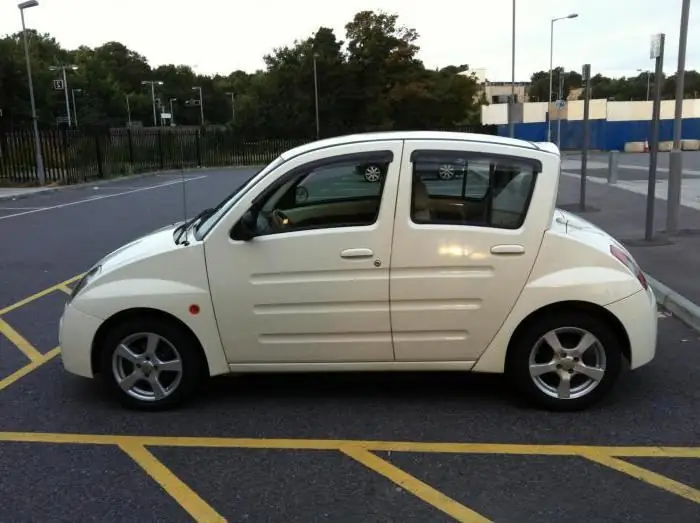
The overall impression of the "neo-retro" design was inspired by the style of Japanese cars in the 1950s and 1960s. The car was equipped with a MacPherson-type suspension in front, while a torsion beam axle was in the back. The color scheme consisted mainly of pastel colors. Unfortunately, the sales turned out to be a failure, as a result, Vi was replaced by the Cypha model.
Toyota WiLL VS
The second generation of the futuristic car was the result of many years of development in pursuit of design. When it was presented at an exhibition in Los Angeles in 2001, the reaction from the public was unexpectedly positive. The design was inspired by the F-117 Nighthawk ste alth fighter, giving it a stylish and unusual beauty.
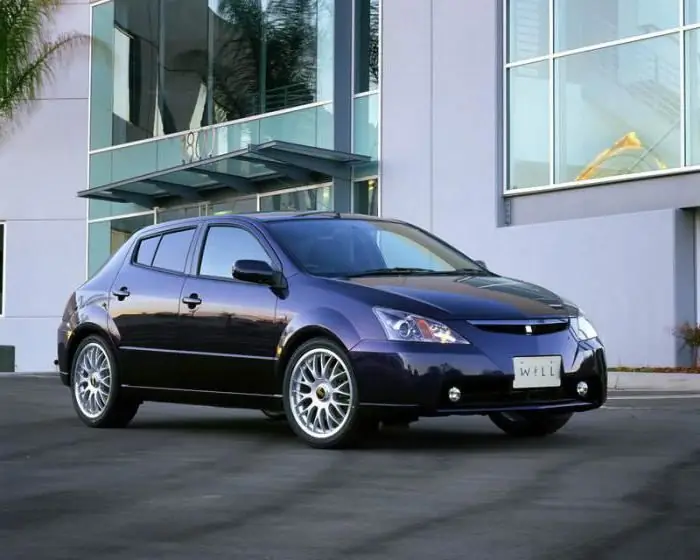
There were three configurations, the richest of which was equipped with a 1.8-liter engine with 180 hp, a tiptronic gearbox, alloy wheels and a unique body kit. Despite the success of the Toyota WiLL VS in the domestic market in Japan, as well as the beginning of a cult worship of this model, it was never sold in other countries.
Toyota WiLL VC (Cypha)
Toyota's latest introduction to the WiLL concept found itself in the VC, later renamed the Cypha. The start of production started in 2002, even at the moment when the previous version of VS was on the assembly line. The "stuffing" was borrowed from a classmate - "Toyota East". Externally, the car was developed on the basis of the Witz and Yaris models, but only in a more angular design.
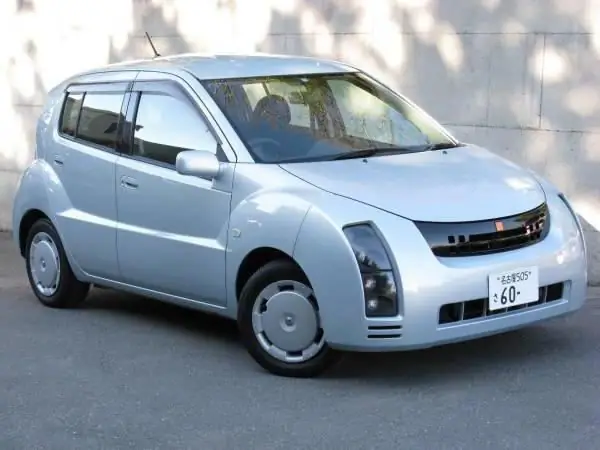
To be extremely frank, the Toyota Will Sifa (in another version - Sayfa) became a continuation of the first not very successful generation. External differences from the predecessor were distinguishable only in the headlights. The front light lamps became vertical and had 4 blocks on each side. The rear ones were moved to the window, which resembled the Renault Megane 2.
In order to lure customers, Toyota came up with a program called Pay As You Go (literally “pay while you go”), which made it possible not to purchase a car for personal use by paying a monthly loan payment, but to purchase lease a car and pay only for the actual mileage of the car, which could be run over during the period of ownership.
Public expectations
As it became clear from the above, "Toyota Villa", reviews of which are quite contradictory, made a lot of noise in various countries and segments of the population. Despite the relatively lackluster success of the Vi and VC models, the intermediate car (VS) has taken a strong hold in the hearts of many car enthusiasts.
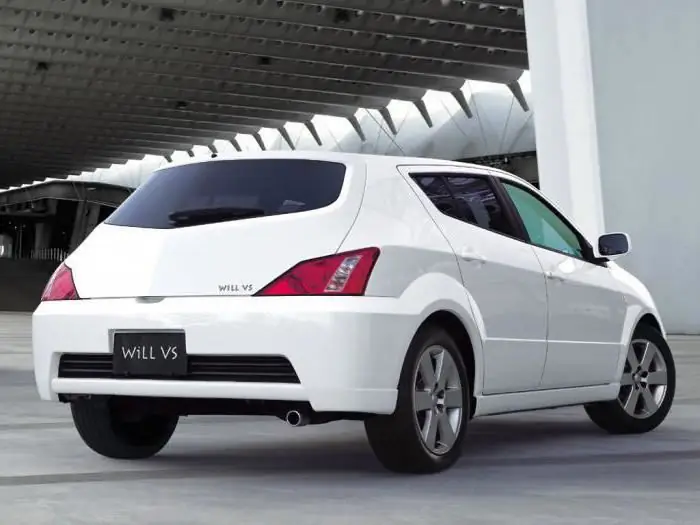
A new model was expected to be introduced after production ended in 2004. But this never happened. This outcome caused frustration and an uproar among VS fans. Experts believe that Toyota Villa had a design and innovation that was ten years ahead of the overall development of the global automotive industry. That is why the surviving samples of VS are still quite popular to this day. Of course, every year it becomes more and more difficult to find a good device, because only 4000 pieces were produced. The small volumes of production are justified by the fact that, allegedly, the VS at the stage of a futuristic concept car was transferred to production. But we are unlikely to ever know the truth.
Scion as continuation of WiLL
In 2004, the Japanese considered WiLL to be a rather unprofitable brand that did not pay for itself, and that is why production under this brand name ceased. Toyota also stopped producing branded cars, but instead a new direction of development appeared - NETZ.
In the United States opened a division, or rather, a subsidiary of Scion. The main concept of a fundamentally new brand was the development of cars that have found their popularity among young people. Enoughsuccessful models tC, xB, xD and FR-S have proven themselves well as analogues of Japanese Toyotas with a left-hand drive. However, despite all efforts, Scion "lived" not for long. Only 13 years have passed since the opening, when it became clear that the company was not paying back its costs, and on August 5, 2016, the brand ceased to exist, leaving behind only already sold copies.
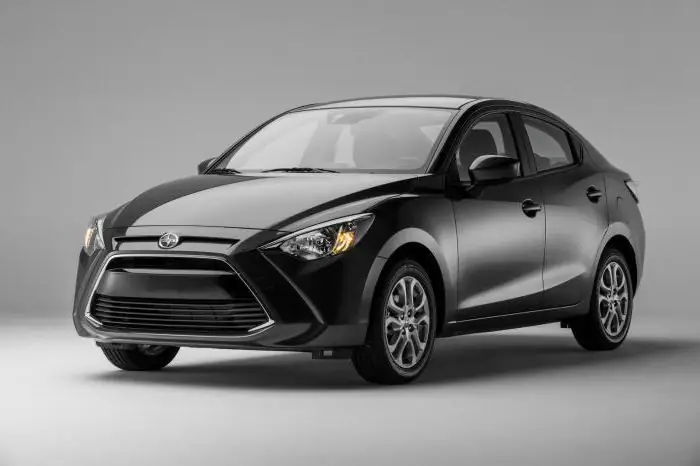
"Toyota Will" makes an ambiguous impression. This line of models can be regarded as a rather brave experiment. Most likely, predicting the losses associated with this event, the engineers and designers of the auto giant were not afraid to flaunt their wildest and unrealistic dreams, embodied in the WiLL lineup. And if the society had not reacted to such experiments so sharply, who knows, perhaps now the brand would be alive. But you should not talk about what is not there, and you can only remember the WiLL line with a smile. Another page of automotive history will remain closed forever.
Recommended:
BMW 7 Series car: review, specifications and reviews

The Bavarian company has been working on the perfect look of its cars for 15 years. But the scope of the brand is quite rigid, so it will not be possible to roam much. But still, the BMW 7 Series attracts with its appearance, although there is nothing innovative in terms of design here. But the filling is a rather interesting component. Actually, we will talk about all the characteristics in this article
Iveco trucks. Main model series
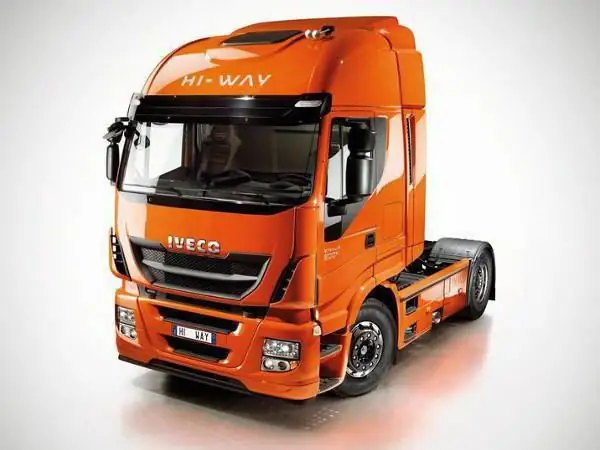
Iveco trucks are suitable for both city and long-distance transportation. In accordance with your needs, goals and financial capabilities, you can choose the right option for yourself. A variety of models allows you to do this. The entire range of models is divided into several series, which we will consider below
"Toyota" - models of the "Corolla" series (10 generations)
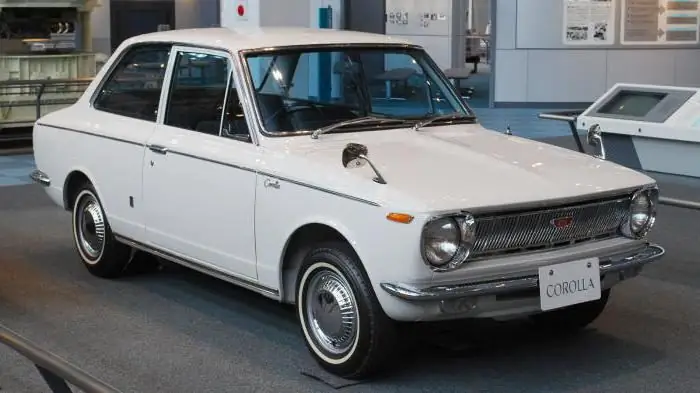
Toyota Corolla is one of the oldest models in the production program of the Japanese car industry. This brand has dozens of generations and is produced to this day
A series of American tractors "Peterbilt"
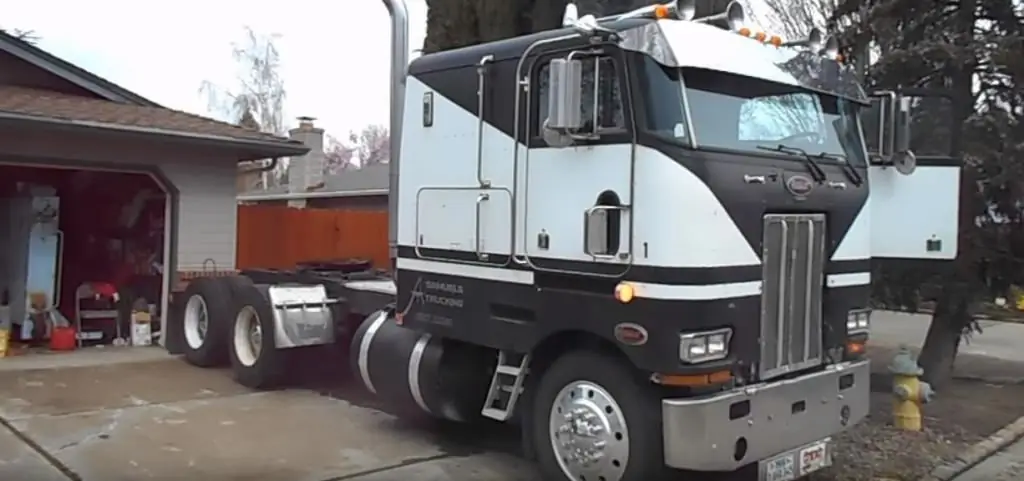
The American company Peterbilt Motors Company was founded in 1939. The company got its name thanks to the timber merchant Theodor Alfred Pieterman. This man for a long time reconstructed cars of other manufacturers for his craft
Series of trailers "Stalker" for the transportation of various motor vehicles

The series of domestic trailers "Stalker" is designed for transportation by cars of various motor vehicles (up to 3.5 m long) and is characterized by modern design, compact size, reliable design and affordable price

